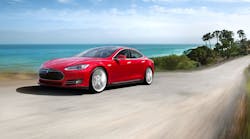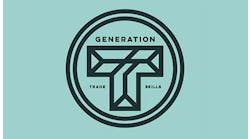Panasonic Corp. and Tesla Motors, Inc. have signed an agreement to cooperate on the construction of a large-scale battery manufacturing plant in the United States, known as the Gigafactory. According to the agreement, Tesla will prepare, provide and manage the land, buildings and utilities. Panasonic will manufacture and supply cylindrical lithium-ion cells and invest in the associated equipment, machinery, and other manufacturing tools based on their mutual approval. A network of supplier partners is planned to produce the required precursor materials.
Tesla will take the cells and other components to assemble battery modules and packs. To meet the projected demand for cells, Tesla will continue to purchase battery cells produced in Panasonic's factories in Japan. Tesla and Panasonic will continue to discuss the details of implementation including sales, operations and investment.
Tesla plans to build this factory with a $5 billion investment, according to Vishal Sapru, Frost & Sullivan Energy & Environment Research Manager and Growth Consultant. "Tesla has already raised over $2 billion to fund this project and it is to be seen what contribution Panasonic will bring to the table. It had been a wait and watch period for Panasonic who was undecided of joining Tesla for this project."
Sapru thought that is was interesting that Panasonic already supplies lithium-ion battery cells to Tesla for its electric vehicles, but was not committed to partner with Tesla on this project. "Now the next announcement eagerly awaited by all is for Tesla to finalize the city in which they will open this gigafactory," he said.
There has been much speculation on where the Gigafactory will be located, and one blogger is positive he has figured it out. According to Bob Tregilus at Transport Evolved, Tesla has already started construction in Northern Nevada. "The Gigafactory is a really big deal, not only because of the $4-5 billion price tag, the projected 6,500 direct jobs it will create, the associated economic activity to support such a facility, and, of course, the local prestige that will signal to investors–like a laser beam–that Tesla’s chosen location is now prime real estate for the next-gen technology innovation boom: but also because static energy storage solutions are the Holy-Grail of the emerging renewable energy powered smart grid," he writes. "Clearly, the Gigafactory is about much more, in the long-term, than simply manufacturing traction batteries for Tesla’s growing electric vehicle fleet."
Tregilus also states no less than eight good reasons why Northern Nevada is a "no-brainer" for a Gigafactory location, including that if Tesla Motors incorporated its battery manufacturing division in Nevada, there would be no franchise tax and no corporate income tax, and no personal income tax. And the location would be accessible from Tesla's home base in Fremont, California.
The Gigafactory is being created to enable a continuous reduction in the cost of long range battery packs in parallel with manufacturing at the volumes required to enable Tesla to meet its goal of advancing mass market electric vehicles. The Gigafactory will be managed by Tesla with Panasonic joining as the principal partner responsible for lithium-ion battery cells and occupying approximately half of the planned manufacturing space; key suppliers combined with Tesla's module and pack assembly will comprise the other half of this fully integrated industrial complex.
Cost reductions will be achieved through optimized manufacturing processes driven by economies of scale previously unobtainable in battery cell and pack production. Further price reductions are achieved by manufacturing cells that have been optimized for electric vehicle design, both in size and function, by co-locating suppliers on-site to eliminate packaging, transportation & duty costs and inventory carrying costs, and by manufacturing at a location with lower utility and operating expenses.



